Hägringen [Mirage] (Peter Weiss, 1959)
Feb
12
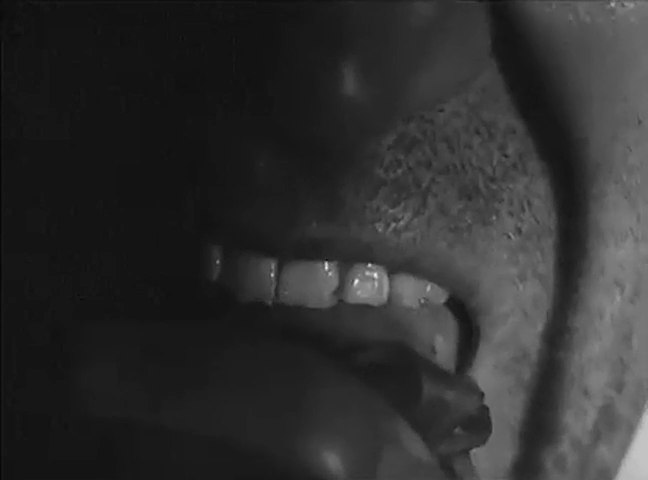
An uncomfortably close close-up up of a man's mouth eating something. Tongue and mouth are visible. He's got stubble. DP: Gustaf Mandal.
experimentalfilm
“In the land of the legless, the one-legged woman is queen.”A Zed & Two Noughts [Z+00 / ZOO] (Peter Greenaway, 1985)
Dec
27
Visit The Zoo Day
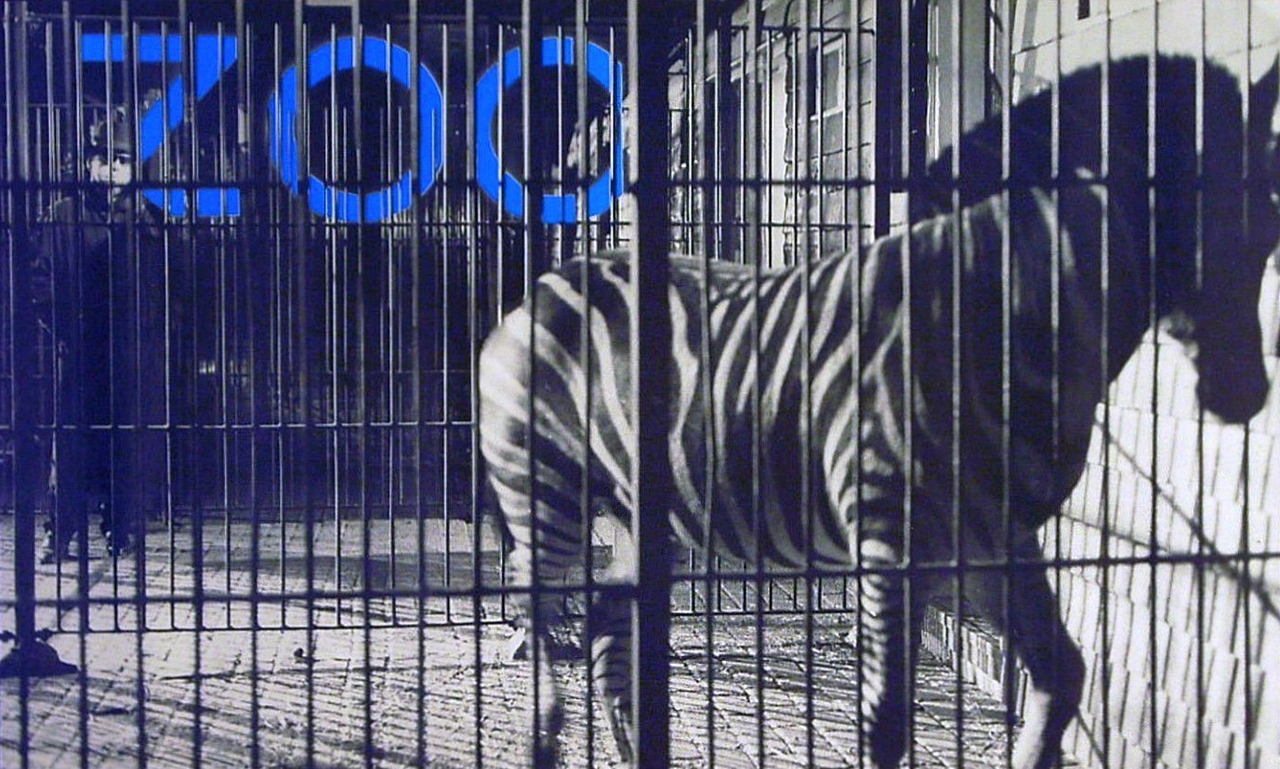
A zebra in a cage with the word ZOO in large blue lit capitals in the background. In the background a man. All but the lettering is black-and-white. DP: Sacha Vierny.
A zoo for National Visit The Zoo Day (USA)
“My cinematic excreta is of four varieties:–batiked abstractions made directly on film between 1939 and 1946; optically printed non-objective studies composed around 1950; semi-realistic animated collages made as part of my alchemical labors of 1957 to 1962; and chronologically superimposed photographs of actualities formed since the latter year. All these works have been organized in specific patterns derived from the interlocking beats of the respiration, the heart and the EEG Alpha component and they should be observed together in order, or not at all, for they are valuable works, works that will live forever—they made me gray.”Mahagonny [Number 18] (Harry Smith, 1980)
Dec
22
राष्ट्रिय गणित दिवस
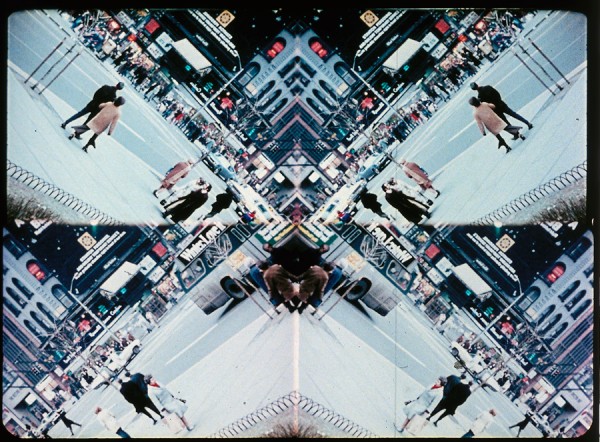
A kaleidoscopic New York street scene. Mahagonny was “made to be displayed with four separate 16 mm projectors onto a single screen or onto two billiard tables suspended over a boxing ring” (Kevin Arrow, see link below).
A mathematics focused movie for National Mathematics Day (India)
Mahagonny is filmmaker, artist, musicologist, and alchemist Harry Smith's mathematical analysis of Marcel Duchamp's masterpiece La mariée mise à nu par ses célibataires, même [The Bride Stripped Bare by Her Bachelors, Even], aka Le Grand Verre [The Large Glass], which was completed in 1923. It is set to Brecht and Weill's opera Aufstieg und Fall der Stadt Mahagonny [Rise and Fall of the City of Mahagonny] from 1930, which was an opera Smith was obsessed with while living in New York's Chelsea Hotel.
– Harry Smith, via
Read an interview with Jonas Mekas about Harry Smith and his Mahagonny.
“Inflammable desires dampened by day under the cold water of consciousness are ignited that night by the libertarian matches of sleep, and burst forth in showers of shimmering incandescence.”Fireworks (Kenneth Anger, 1947)
Dec
8
National Christmas Tree Day
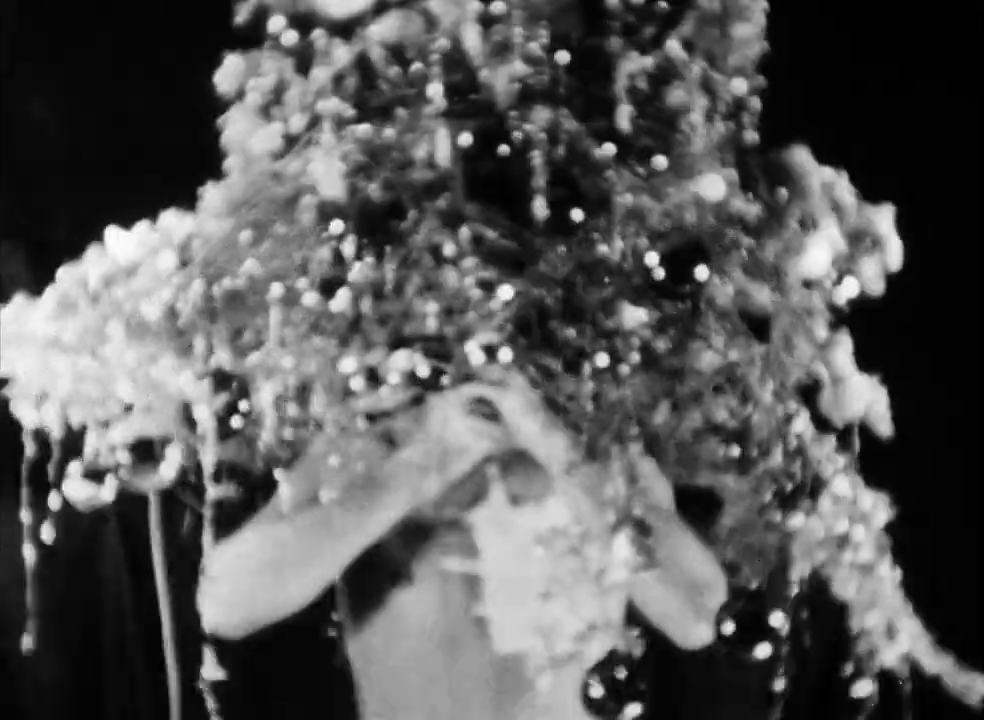
The Dreamer (Kenneth Anger) holding a tinsel-decked Christmas tree in front of his naked upper body. The scene appears to foreshadow Yvonne Marquis getting into her silver dress in Anger's Puce Moment (1949).
A Christmas tree for National Christmas Tree Day (USA)
In August 1942, a Mexican-American man with a broken finger was found semiconscious near Sleepy Lagoon, Ca.. By association, a group of young Latinos was put on trial. This spark, mere months after Roosevelt sent thousands of Japanese Americans to concentration camps and fuelled by Cold War paranoia, eventually set off the Zoot Suit Riots.
Zoot Suiters or Pachucos and other “outsiders” like African, Italian and Filipino Americans, were viciously attacked by Anglo-American #sailors. Those suits, all that fabric, this colourful extravagance, they cried out, were hampering the war effort.
– The Dreamer
The Dreamer, Anger, dreams of a similar violent attack. The sadism is harrowing, filmed with such exquisite eye that it's impossible to look away. Blood finds its way out, pulsating and spurting. Ambiguous glances. A hand, no finger. A young man awakes, is born. The dreamer is still asleep.
“I dream of resurrection in a party dress.”The Savage Eye (Ben Maddow, Sidney Meyers + Joseph Strick, 1959)
Dec
7
National Judith Day
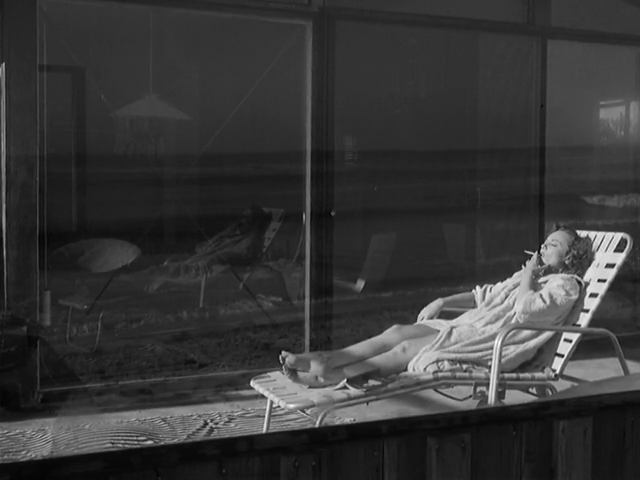
Judith X (Barbara Baxley) relaxing on a sun lounger. DPs: Jack Couffer, Helen Levitt & Haskell Wexler.
A Judith or Judy for National Judith Day (USA)
By times, The Savage Eye has more in common with mondo than with drama. Judith's betrayed, by her husband. She takes a plane out out out. To Los Angeles, where an angel – it's their town after all – talks to her. About her life, the old one and the new. She tries to reinvent herself with new clothes, a hairstyle, a manicure. It fills the longs days, that too. She attends bloodsports. A burlesque, with her new lover, a married man. There are bleeders and drinkers and jumpers. Sticky sheets. New eyes and fiery tongues, courtesy of Jesus. What is Judith's life if not a stranger's.
– Judith X
Ben Maddow, Sidney Meyers, and Joseph Strick's lonely exploration of a gritty, hopeless LA was filmed over 4 years by photographers Haskell Wexler, Helen Levitt, and Jack Couffer in wonderful, merely wordless cinéma vérité. It feels naked and raw, and broke ground for the American New Wave that came crashing in almost a decade later.
“There is no why for my making films. I just liked the twitters of the machine, and since it was an extension of painting for me, I tried it and loved it. In painting I never liked the staid and static, always looked for what would change the source of light and stance, using glitters, glass beads, luminous paint, so the camera was a natural for me to try—but how expensive!”Lights (Marie Menken, 1966)
Dec
1
National Christmas Lights Day

A display of what appear to be red, yellow, green and blue bell-shaped Christmas lights among silhouetted tree branches. DP: Marie Menken.
Christmas lights for National Christmas Lights Day (USA)
It took experimental filmmaker Marie Menken three years to shoot Lights. From midnight until 1 AM, she filmed New York's window displays during the holiday season, using her camera, motion, colour, and available light sources as her paintbrush.
– Marie Menken, c. 1966
Filming at night helped to avoid unwanted interruptions of people and cars, but turned out to be problematic for her hand-cranked #Bolex, which kept stalling in NYC's icy winter nights.
Kick That Habit (Peter Liechti, 1989)
Nov
16
National Andy Day
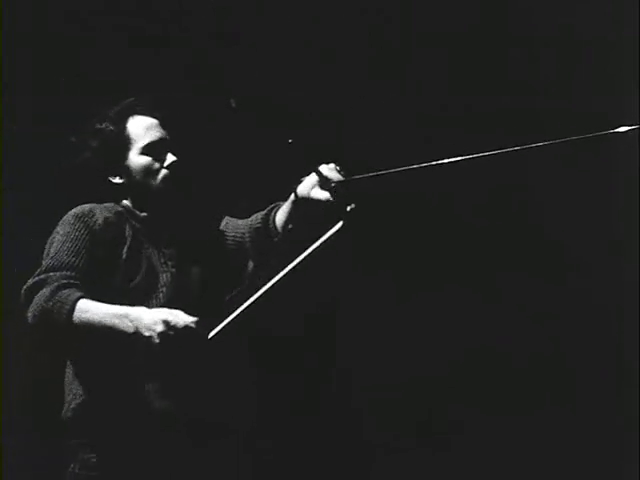
Andy Guhl of experimental Swiss music/art group Voice Crack playing metal wire strung along a room. DP: Peter Liechti.
Everything is noise. Everything is light. Everything is dark. Everything is motion. Everything is static. Everything is energy. Everything is lethargy. Everything is rhythm. Everything is chaos. Everything is silent
Goshogaoka [御所ケ丘] (Sharon Lockhart, 1998)
Nov
6
Play Basketball Day

Girls from the Moriya City Goshogaoka junior high school girl basketball team practising their blocking technique. Cibachrome print © Sharon Lockhart, 1997 (via).
Within the boundaries of Sharon Lockhart's static camera, girls from Goshogaoka junior high school practice basketball. In six uninterrupted 10 minute scenes, we see them warm up and train several typical moves, shots, and blocks. With the camera set in one position, some of the action happens off-screen, resulting in unrehearsed synchronised choreography.
狂つた一頁 [Kurutta ippēji / A Page of Madness] (Teinosuke Kinugasa, 1926)
Sep
12
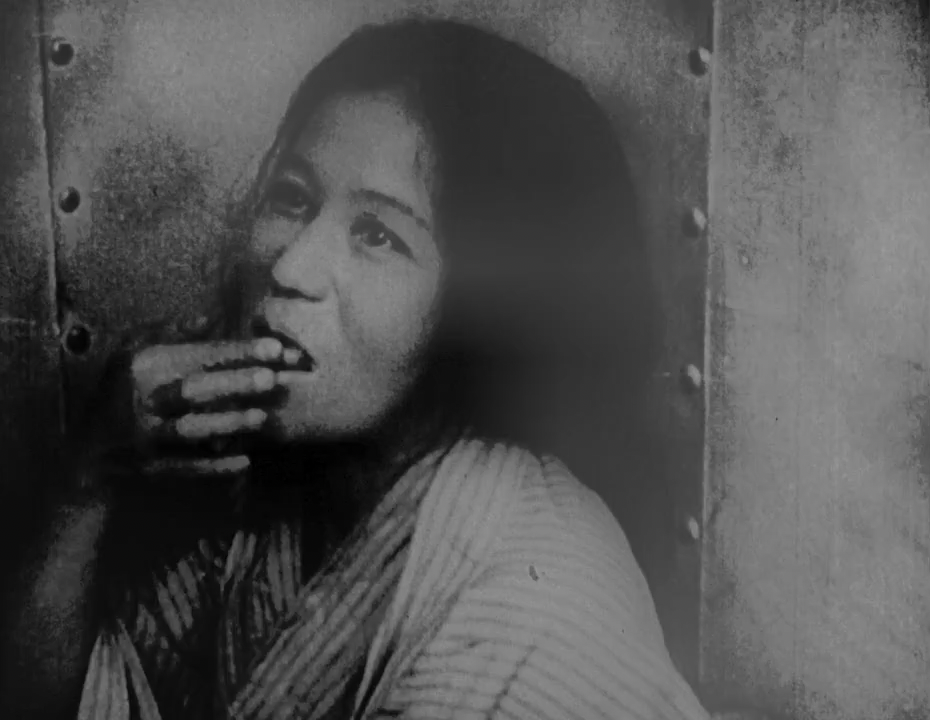
The servant's wife (Yoshie Nakagawa) eating. She looks up at someone offscreen, and smiles. DP: Kōhei Sugiyama.
ねこぢる草 [Nekojiru-sō / Cat Soup] (Tatsuo Satō, 2001)
Aug
30
National Grief Awareness Day
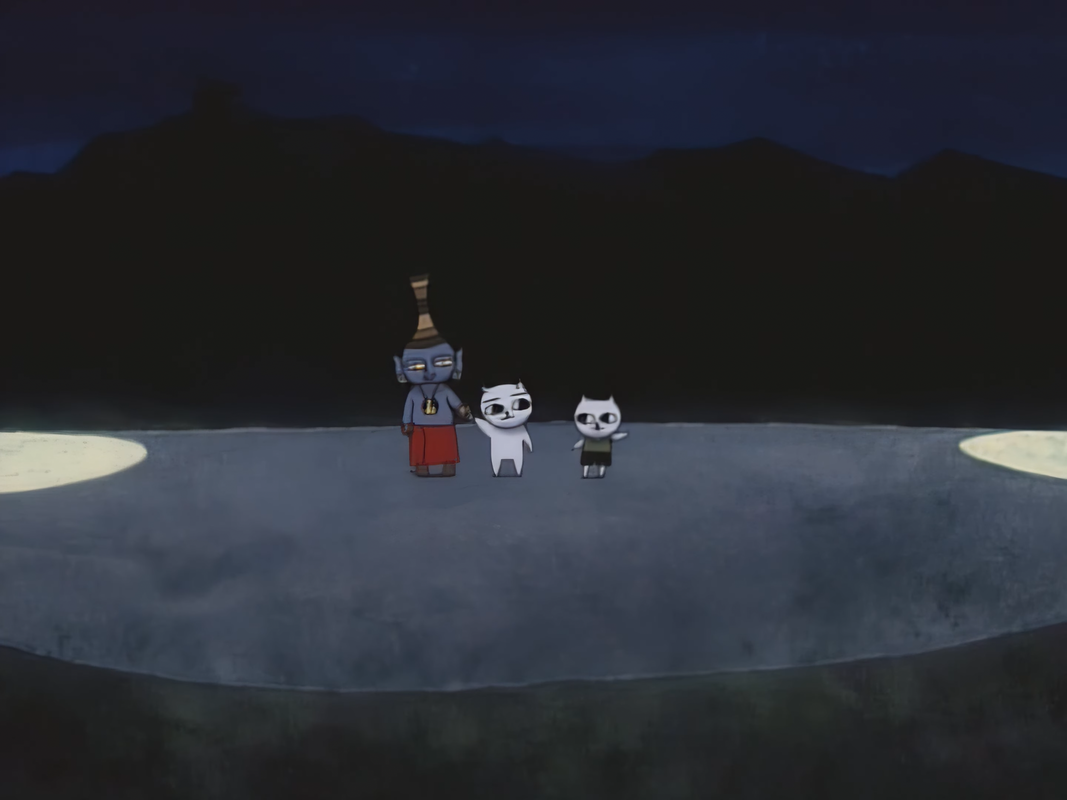
Nyāko taken away by Jizō with little brother Nyatta telling Nyāko to come back home. DP: Masaru Takase.
Nyatta is not ready to have Jizō take away his big sister Nyāko to Ne-no-kuni, the land of the dead. The kitten grabs his sister's paw, resulting in her soul being ripped in two and leaving Nyāko in a state of limbo. The cats' mother then sends the two off on a mission to buy fried #tofu. Maybe now Nyatta can find a way to put Nyāko's divided soul back together. But first, there's a circus to visit!
ねこぢる草 is based on works by mangaka Nekojiru / ねこぢる (1967—1998) whose trademark crudely drawn #cats caused a ripple in Japan's underground #manga circuit. Nyatta and Nyāko continued their surreal adventures by way of widower Yamano Hajime after Nekojiru's tragic suicide in 1998.